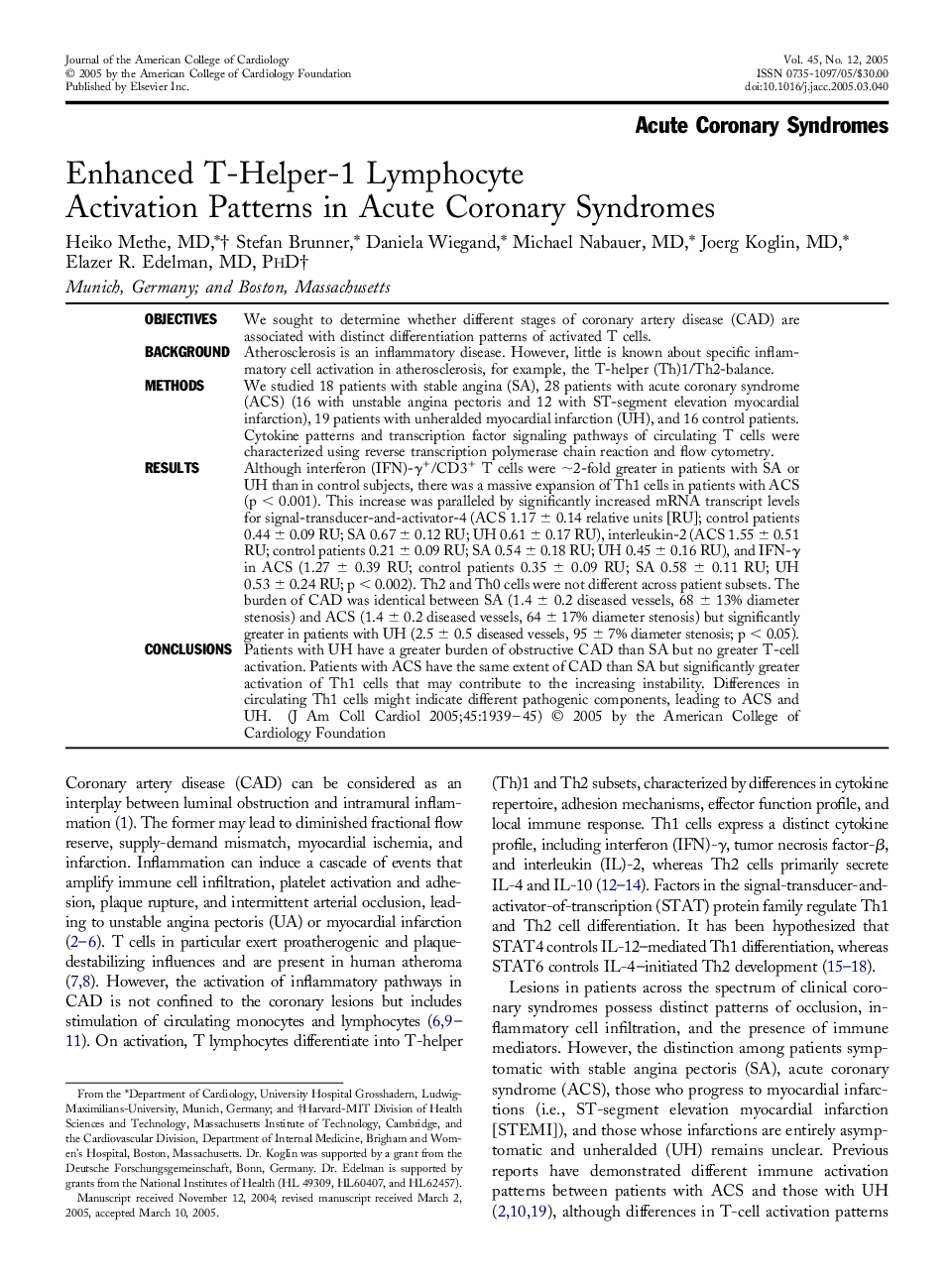| کد مقاله | کد نشریه | سال انتشار | مقاله انگلیسی | نسخه تمام متن |
|---|---|---|---|---|
| 2954509 | 1577540 | 2005 | 7 صفحه PDF | دانلود رایگان |

ObjectivesWe sought to determine whether different stages of coronary artery disease (CAD) are associated with distinct differentiation patterns of activated T cells.BackgroundAtherosclerosis is an inflammatory disease. However, little is known about specific inflammatory cell activation in atherosclerosis, for example, the T-helper (Th)1/Th2-balance.MethodsWe studied 18 patients with stable angina (SA), 28 patients with acute coronary syndrome (ACS) (16 with unstable angina pectoris and 12 with ST-segment elevation myocardial infarction), 19 patients with unheralded myocardial infarction (UH), and 16 control patients. Cytokine patterns and transcription factor signaling pathways of circulating T cells were characterized using reverse transcription polymerase chain reaction and flow cytometry.ResultsAlthough interferon (IFN)-γ+/CD3+T cells were ∼2-fold greater in patients with SA or UH than in control subjects, there was a massive expansion of Th1 cells in patients with ACS (p < 0.001). This increase was paralleled by significantly increased mRNA transcript levels for signal-transducer-and-activator-4 (ACS 1.17 ± 0.14 relative units [RU]; control patients 0.44 ± 0.09 RU; SA 0.67 ± 0.12 RU; UH 0.61 ± 0.17 RU), interleukin-2 (ACS 1.55 ± 0.51 RU; control patients 0.21 ± 0.09 RU; SA 0.54 ± 0.18 RU; UH 0.45 ± 0.16 RU), and IFN-γ in ACS (1.27 ± 0.39 RU; control patients 0.35 ± 0.09 RU; SA 0.58 ± 0.11 RU; UH 0.53 ± 0.24 RU; p < 0.002). Th2 and Th0 cells were not different across patient subsets. The burden of CAD was identical between SA (1.4 ± 0.2 diseased vessels, 68 ± 13% diameter stenosis) and ACS (1.4 ± 0.2 diseased vessels, 64 ± 17% diameter stenosis) but significantly greater in patients with UH (2.5 ± 0.5 diseased vessels, 95 ± 7% diameter stenosis; p < 0.05).ConclusionsPatients with UH have a greater burden of obstructive CAD than SA but no greater T-cell activation. Patients with ACS have the same extent of CAD than SA but significantly greater activation of Th1 cells that may contribute to the increasing instability. Differences in circulating Th1 cells might indicate different pathogenic components, leading to ACS and UH.
Journal: Journal of the American College of Cardiology - Volume 45, Issue 12, 21 June 2005, Pages 1939–1945